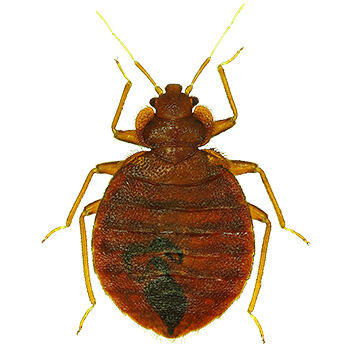Discovering the Science Behind Bed Pest Warm Treatments as a Sustainable Bug Management Approach
In the realm of parasite administration, the pursuit for sustainable and effective solutions continues to be a constant quest. One such method that has obtained traction recently is the use of warm therapies to fight bed pest infestations. By taking advantage of the science behind thermal death factors for these relentless insects, warmth therapies provide an encouraging alternative to conventional chemical-based strategies. The intricacies of exactly how warmth effectively gets rid of bed insects and the more comprehensive implications for sustainable bug monitoring techniques make this a topic worth discovering further.
Bed Bug Heat Treatment Process

Thermal Fatality Point for Bed Pests
Subjecting bed bugs to elevated temperatures beyond their thermal resistance variety is crucial for accomplishing effective obliteration in heat therapy processes. The thermal death factor for bed bugs describes the temperature at which these bugs can not survive. Research study shows that bed bugs begin to die when exposed to temperature levels above 113 ° F(45 ° C) for a sustained duration. As the temperature boosts, so does the death rate of bed insects. At around 118 ° F(48 ° C ), bed insects start to pass away quickly, with a death rate of almost 99% within mins of exposure. This demonstrates the level of sensitivity of bed pests to high temperatures and highlights the performance of heat treatments in removing problems. By reaching and preserving temperature levels over the thermal death point for bed insects, bug management professionals can make sure thorough elimination of bed bug populations, consisting of hard-to-reach locations where chemical therapies might be less efficient. Recognizing the thermal fatality factor for bed bugs is important for carrying out effective warmth therapy methods and accomplishing lasting parasite management outcomes.
Benefits of Warm Treatments
Having established the essential thermal fatality point for bed bugs, it is essential to currently check out the significant benefits that warm treatments offer in properly removing these durable pests. Warmth treatments existing a number of essential advantages when compared to traditional chemical techniques. One of the key benefits is that heat can pass through deep into splits and gaps where bed pests hide, making certain that even one of the most hard-to-reach areas are warmed to deadly temperature levels. This extensive strategy not only eliminates live insects yet likewise targets bed pest eggs, avoiding future problems.
In addition, heat treatments are eco pleasant and safe, making them a sustainable insect administration method. Unlike chemical pesticides, warmth therapies do not leave harmful residues that can position dangers to human health and wellness or the atmosphere. This element is especially crucial in delicate settings such as health centers, colleges, and residential areas where chemical use might not be preferable.
In addition, warmth therapies have a high success price in getting rid of bed insect invasions in a solitary treatment, decreasing the requirement for multiple gos to and reducing disruption to occupants. This efficiency not just conserves money and time however likewise offers peace of mind to those dealing with bed pest troubles.
Efficiency of Warm Treatment

Warmth therapies have the added benefit of killing bed insect eggs, which are usually resistant to standard chemical therapies. In general, the effectiveness of warm treatments in eradicating bed insect problems makes them a reputable and sustainable parasite management strategy.
Sustainable Parasite Administration Conveniences
Implementing sustainable pest monitoring techniques uses long-lasting benefits for both the environment and public health. By making use of techniques such as warm treatments for pest control, we can lower the dependence on dangerous chemical pesticides that can have unfavorable results on ecological communities and human health and wellness - bed bug heat treatment. Sustainable pest monitoring methods help in maintaining biodiversity by targeting certain insects without harming non-target microorganisms, thus keeping a well balanced community
Furthermore, lasting parasite administration practices add to the overall wellness and wellness click over here now of the general public. By reducing direct exposure to harmful chemicals made use of in standard pest control techniques, warmth treatments give a much safer choice for insect monitoring in domestic, business, and public spaces. This decrease in useful reference chemical use also assists in preventing pesticide deposits from contaminating dirt, air, and water, protecting ecological top quality.
Conclusion
Finally, bed bug warmth treatments have been revealed to be a sustainable and effective insect monitoring approach. The thermal fatality point for bed bugs makes them at risk to heat treatments, which have many benefits over traditional chemical treatments. The efficiency of warmth therapies in removing bed bug invasions while lessening ecological influence highlights the possibility of this method as a sustainable service for insect control.
The bed insect warm therapy procedure entails elevating the temperature level within infested areas to a level that efficiently gets rid of bed insects and their eggs. By reaching and preserving temperature levels over the thermal death factor for bed pests, pest management professionals can guarantee detailed removal of bed insect populations, including hard-to-reach areas where chemical treatments might be much less reliable. One of the webpage key benefits is that warm can permeate deep into cracks and crevices where bed insects hide, guaranteeing that even the most hard-to-reach areas are warmed to dangerous temperature levels. Unlike chemical treatments that may leave behind immune populaces, warm treatments offer a safe and eco friendly service that can penetrate deep right into furnishings, walls, and various other hard-to-reach areas where bed pests conceal.
The thermal death factor for bed insects makes them vulnerable to heat therapies, which have countless benefits over conventional chemical treatments.